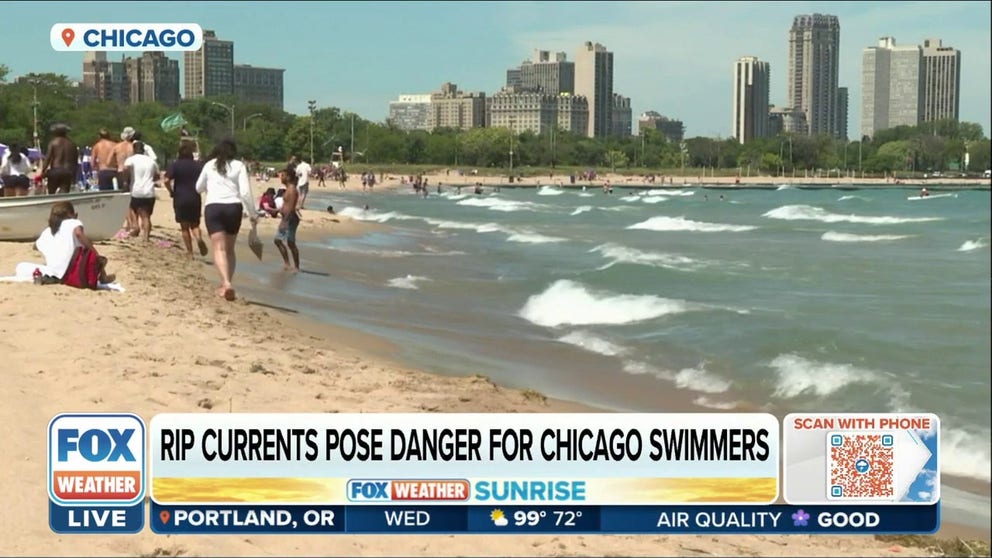Yes, the Great Lakes can have rip currents. How safety advocates are educating swimmers
While most swimmers know about rip currents in the ocean, they may not realize that those dangerous currents can also occur in the Great Lakes.
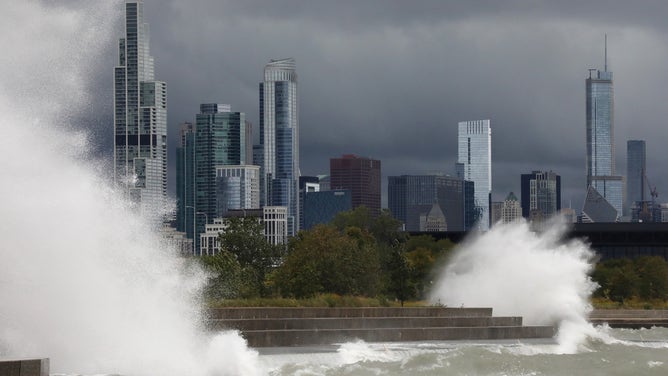
Large Lake Michigan waves break near 31st Street Beach in Chicago with the skyline in the background.
(Antonio Perez/Chicago Tribune/Tribune News Service via Getty Images / Getty Images)
CHICAGO – Many of us think of lakes as safer for swimming and boating versus the ocean with its various waves and currents. However, the Great Lakes are so big that wind churns up waves and rip currents that can compete with those found in oceans.
This year alone, 84 people have drowned in the five Great Lakes. About half of those deaths happened in Lake Michigan, according to the Great Lakes Surf Rescue Project. The National Weather Service has dubbed Lake Michigan the "deadliest Great Lake."
"With the Great Lakes, we might underestimate them because they think it's just a little lake, but really it's more of an inland sea," said Dave Benjamin, co-founder of the Great Lakes Surf Rescue Project. "Whenever we have weather conditions across the Great Lakes, it will create several types of dangerous currents, and most people aren't really thinking about which way the wind is blowing when they go to the beach; they're just thinking about, you know, sunshine and hot weather to go to the beach."

North winds generate enormous swells when they transfer energy along 307 miles of water.
(Great Lakes Surf Rescue Project)
The day that changed Benjamin's life path
Benjamin knows all too well how dangerous waves and currents can be after almost succumbing to them during a surfing accident 22 years ago. After 40 years of swimming and surfing on Lake Michigan, he felt safe.
"This wave is pushing over, and it catapults me and I land flat on my back in the water, and then the next moment, the wave crashes down on me," Benjamin said in a YouTube video. "The water is pouring in my face coming in through my suit, flushing me with 30-degree cold water, pushing me to the bottom, and I immediately panic. I can't breathe and, (I'm) being held underwater."
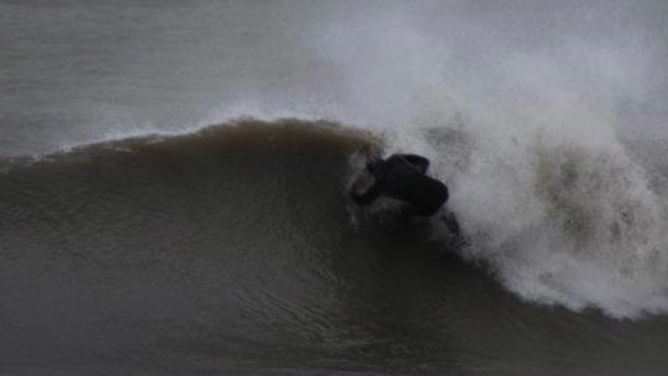
Benjamin hit the impressive Lake Michigan waves the day after Christmas but almost didn't make it home.
(Dave Benjamin)
He tried waving for help to his two kids down on the beach 200 yards away, but when he put up his hand, he slipped under the lake’s surface again.
"And I'm going underwater and holding my last breath, and I'm thinking, ‘You know, this is it for me,’" Benjamin recalled. "There’s a current pulling me further out. I was caught in a structural current near a pier."
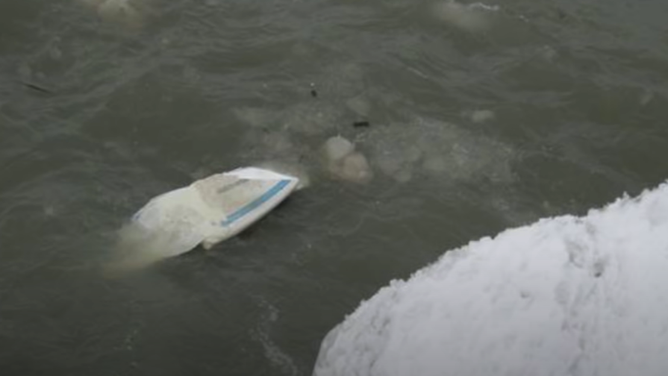
Benjamin's surfboard caught in the turbulent water next to the pier getting beaten up in what he calls the washing machine effect.
He finally calmed down and remembered his training. He floated and slowly made his way out of the current and back to the beach 40 minutes later.
Those terrifying 40 minutes prompted him to found the Great Lakes Surf Rescue Project aimed at water safety and armed with stunning stats. He is an advocate for swimming, lifesaving instruction and public rescue equipment.
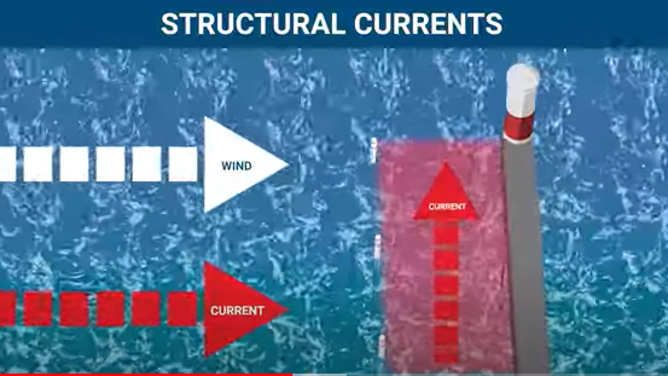
Longshore currents parallels to the beach run into a pier and create a structural current away from shore.
(Great Lakes Surf Rescue Project)
Staggering stats
Benjamin pointed to a couple of studies by the American Red Cross, which state more than 80% of Americans said they could swim. After testing them, only 54% could pass the five basic swimming skills. Males overwhelmingly overestimated their swimming ability.
HUNDREDS OF BEACHGOERS RESCUED FROM RIP CURRENTS ALONG FLORIDA COAST OVER WEEKEND
"Four out of five drowning victims are male," Benjamin stated, saying that males are also more likely to succumb to peer pressure and take risks. "So, your average drowning accident is where friends dared their friends to jump off the pier here, and the friend is not being honest with themselves about their swimming ability, and then they are drowning. Or when they dare them to swim to the swim buoy and back, they may not realize that the person attempting it can’t really do it."
Last month, FOX Weather’s Nicole Valdes spotted the crashing surf of Lake Michigan. She reported that officials had banned swimming at 20 beaches around Chicago because of dangerous swimming conditions and rip currents. The city and lifeguards make the call for each individual beach.
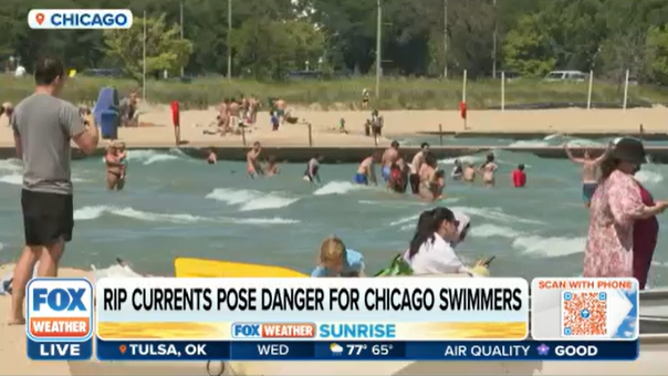
Most waders are safe in the lake waves but once the water is overhead, swimmers can panic and get exhausted in the turbulent water and currents. A child can drown in as little as 20 seconds and an adult in as little as 40 seconds according to the Hackensack Meridian Health Hospital. A half cup of water is all it takes.
(FOX Weather)
Rip currents away from the beach, longshore currents parallel to the beach, structural currents parallel to a pier or jetty and shifting underwater sandbars create unseen obstacles for anyone in the water, even just feet from the shore or a pier.
"This past summer was the last straw," Illinois State Rep. Kelly Cassidy told FOX 32 Chicago after penning a 2021 bill requiring rescue equipment on piers and beaches. "We had another drowning. This young man was six feet from the pier. If we'd had a life ring, he'd be alive today."
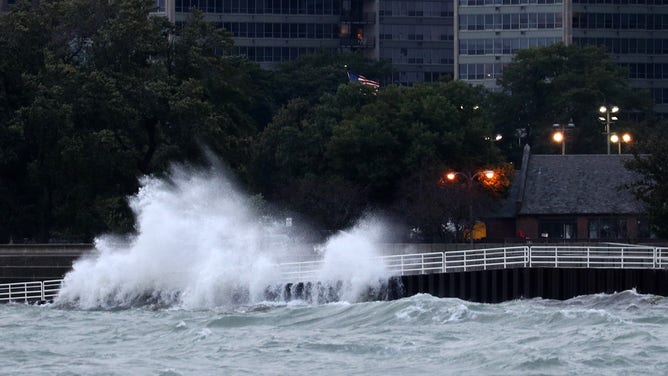
A man died at this North Avenue Beach in Chicago when a wave like this one knocked him down and pulled him into the lake.
(Bilgin S. Sasmaz/Anadolu Agency/Getty Images / Getty Images)
"And the statistics on this are unfortunately just staggering," Valdes said in her report. "More than 100 people killed since 2010 in the last decade or so due to dangerous swimming conditions in the Great Lakes, but 60% of those deaths (were) caused by rip currents."
Great Lakes can pose rip current danger while not being close to the ocean
If you live in Illinois or Indiana, chances are you're seeing swim advisories posted, warning you of dangerous rip currents that may be keeping you from enjoying the beach. FOX Weather's Nicole Valdes explains how the Great Lakes can pose this threat.
In addition, Great Lakes waves come onto shore every three to five seconds on average, much faster than ocean waves, according to the National Weather Service. The frequency can make it hard for anyone knocked down to recover.
"So most people assume knowing how to swim means you are inoculated from a downing," Benjamin said. "But the reality is people don't associate swimming as an endurance sport."
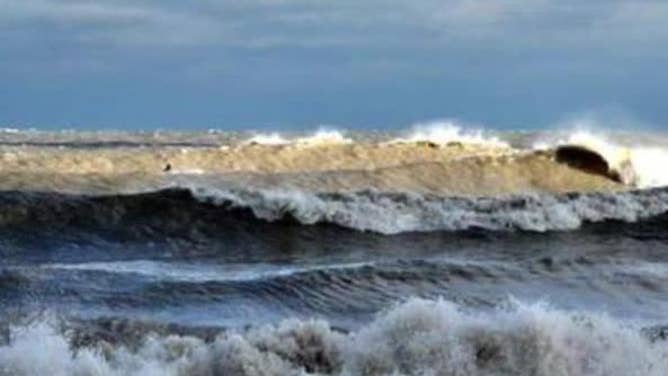
Wind churns up waves that are more frequent than those in the ocean.
(Dave Benjamin)
"If you don't have experience with panic and working through panic or alleviating panic, you're likely just going to exhaust yourself and submerge," he added.
The Red Cross study found that almost half of Americans report that they have had an experience where they were afraid they might drown. One in five surveyed knew someone who drowned and another 20% knew someone who survived a drowning incident. An average of 10 people in the U.S. die every day from unintentional drowning and 20% of them are under the age of 14, according to the study.
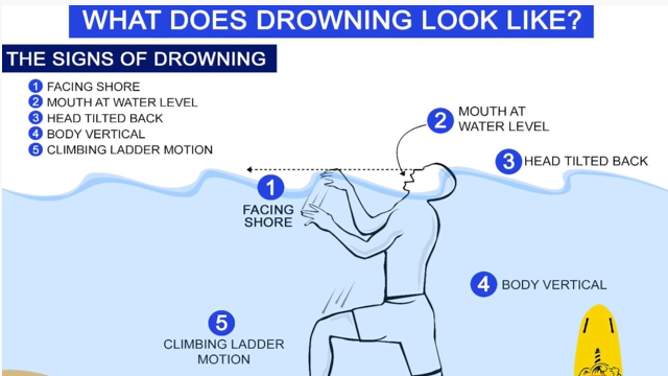
Once showing the signs of drowning details in this diagram Benjamin said a person will submerge in 60 seconds. "Once submerged, the clock is ticking. At two minutes of submersion, if someone is recovered and if artificial respiration is performed, there is a 92% survival rate," Benjamin continued. "At 10 minutes of submersion there is a 14% survival rate. After 10 minutes, it unfortunately becomes a recovery operation."
Drowning is the second leading cause of death for children and the sixth for all ages, according to the Red Cross. For every child that dies from drowning, another five are treated in emergency rooms for near-drownings, according to the Red Cross.
"More school children will probably die (from) drowning each year than in fires, tornadoes, school shootings and earthquakes all combined," said Benjamin, quoting CDC stats.

Chicago families hit the waters of Lake Michigan to escape the summer heat.
(Jamie Kelter Davis/For The Washington Post via Getty Images / Getty Images)
It's not just beachgoers and people near piers who are in jeopardy. Benjamin said there have been instances of boaters who didn’t anchor their boats in the middle of the lake and the wind took it away after they jumped in the water. Panic and exhaustion cause many mistakes that lead to drowning, even for people who know how to swim.
HOW TO WATCH FOX WEATHER ON TV
How to survive
Valdes reported that safety experts in the Great Lakes tell swimmers who are caught in a rip current to flip onto their back, float with the current and follow it until it ends.
"Float to keep your head above water," Benjamin said. "Float to conserve energy. Float to calm yourself down from the fear and panic of drowning. The longer you are floating, the longer you are alive, the more time you are buying for rescue to arrive."
Other safety tips for swimmers include paying attention to beach hazard signs and swimming near lifeguards. Swimmers should also consider taking a class like one offered through the Red Cross or the Great Lakes Surf Rescue Project to learn lifesaving skills if you find yourself drowning or need to help someone who is drowning.
